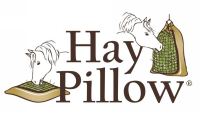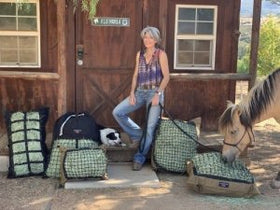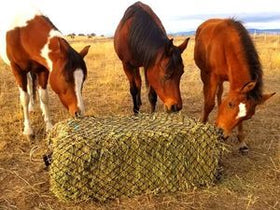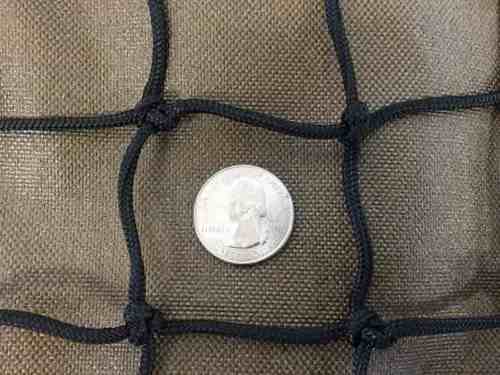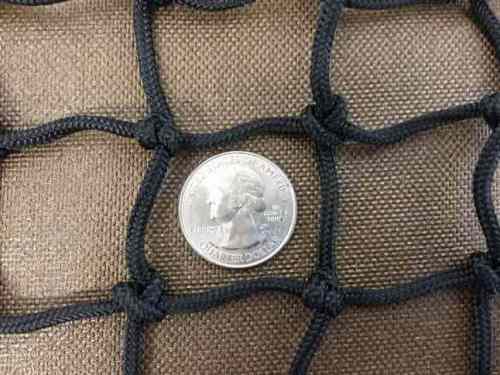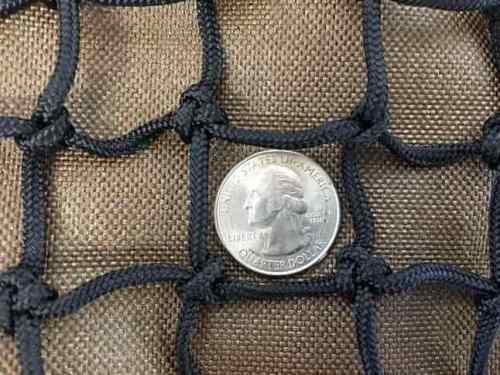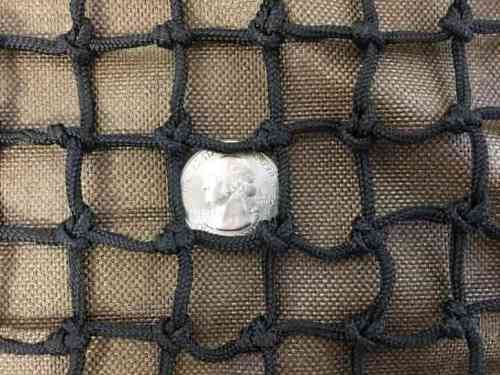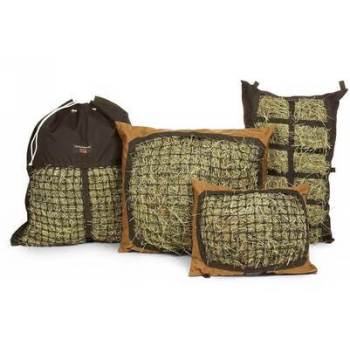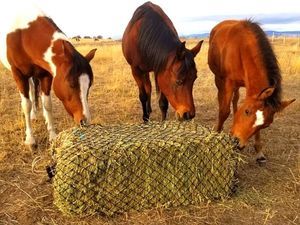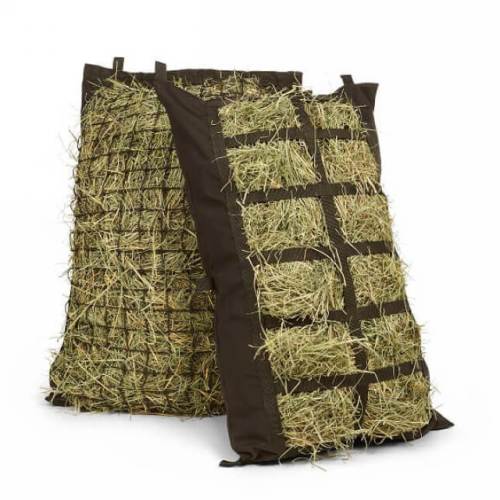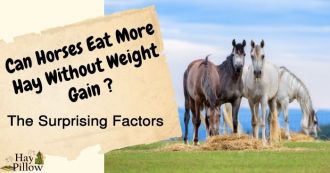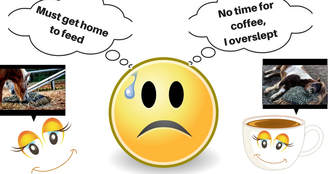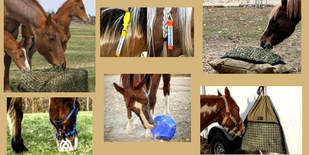Frequently Asked Questions on Mesh Size
The 1 ¾” mesh size is the most popular. Just a ¼” reduction in mesh size can cause frustration. If you have never used a slow feeder we suggest the 1 ¾”. Smaller mesh sizes do not necessarily equate to your equine eating slower - they may not be able to eat at all. Depending on your equine's personality and experience with slow feeders, there is no “one size fits all equines” mesh size. Horses fed meals are typically anxious when fed and tend to be far less patient with slow feeders.
What mesh size should I order for the Mini Hay Pillow?
The 1 ¼” is the most popular mesh size and a great choice to introduce the Hay Pillow® to miniature equines. Smaller mesh sizes do not necessarily equate to your equine eating slower - they may not be able to eat at all.
-
4" x 6" - If you load your bags with alfalfa - or - if your horse is not accustomed to a slow feed hay net with a 1 3/4" or smaller mesh size.
-
1 3/4" x 1 3/4" - If your horse is accustomed to slow feeding hay bags or nets with a 1 3/4" mesh size or smaller - and - you load your bags with grass hay.
Why do you offer so many mesh sizes?
¼” makes a significant difference in rate of consumption and can also determine whether your horse can or can't extract hay! Hay Pillow Inc. offers mesh sizes to accommodate very adept equines and those not so adept or patient. The most anxious eaters tend to be meal fed and/or metabolically challenged horses. If slow feeding is introduced thoughtfully, the vast majority of horses adapt quickly. Find tips & techniques to ease the transition & avoid frustration.
Can I use more than one mesh size?
Absolutely! To ensure your horse always has hay available you may want to feed some hay in a larger mesh and some in the next size smaller mesh as an always have hay source. Some equines may adjust to a smaller mesh size with ease, some may adjust in time and others may not. Using multiple bags encourages movement.
What variables should I consider?
- Type of hay, palatability, coarseness and length of stem
- Patience level
- Technique - ability
- Meals or free-choice
- Duration of fasting between meals
- Metabolic challenges
- Experience with slow feeders
-
Weather
Important! Patience level trumps ability - An individual may have the ability to extract hay from a particular mesh size, but not the patience level. In this situation, a combination of mesh sizes can be a huge advantage! Once your horse eats some hay from a larger mesh size they may be more relaxed and patient with the next size down (in the same feeding period).
What if I have two or more horses in the same enclosure?
When offering slow fed forage to 2 or more individuals in the same enclosure, please choose a mesh size to accommodate the least adept or patient individual and supply at least one slow feed hay bag or net per individual. Ideally, it is best to offer one additional bag (if two horses, offer three bags for them to move among).
Is it possible to order a mesh size too small?
Yes. Smaller mesh sizes do not necessarily equate to your equine eating slower - they may not be able to eat at all or get frustrated and destructive. Depending on your equine's personality and experience with slow feeders, there is no “one size fits all equines” mesh size.
Is it possible to slow feed chopped forage?
Yes, to some degree. Chopped forage is more challenging in regards to choosing an appropriate mesh size due to the short length compared to grass hay. If a mesh size is too large, it tends to fall out. Too small and they won't be able to extract it and cause frustration. To avoid potential waste: use a day net and clip it in a tub. Photos and instructions can be viewed here, scroll down to Attach Swivel Clips in a Tub or Water Trough to Secure Your Day or Bale Net.
Can alfalfa be slow fed successfully?
Yes (to some degree) and no! Grass hay is optimum for slow feeding because of the much longer stem/leave length. Alfalfa can be challenging to slow feed due to tightly packed flakes, short stems and small leaves. Horses tend to be far more anxious to eat it as quickly as possible due to its high palatability, which can easily result in frustration.
Alfalfa must be completely pulled apart regardless of the slow feed device. Choosing an appropriate mesh size is far more challenging. If a mesh size is too large, it tends to fall out - too small and they won't be able to extract it.
If you are feeding limited amounts of alfalfa in addition to grass hay, it’s not worth the hassle. We recommend feeding it loose in a tub or trough.
What about soaked hay?
Soaked hay typically requires larger mesh sizes than dry hay because the ends don't protrude up through the netting like dry hay. Regardless of the mesh size or slow feed device, it tends to come out in bunches since it sticks to itself. Learn how to test your hay and avoid soaking if the results of NSC's are 10% or less.
Should shod livestock use any netting device on the ground?
No. Due to the dangers involved in using any mesh material that can potentially get caught on a horseshoe it is not recommended. See our Slow Feed Solutions By Enclosure Type & Weather Conditions to learn more about appropriate choices for shod livestock.
Questions?
Contact an expert by email or call 888-489-0022.

